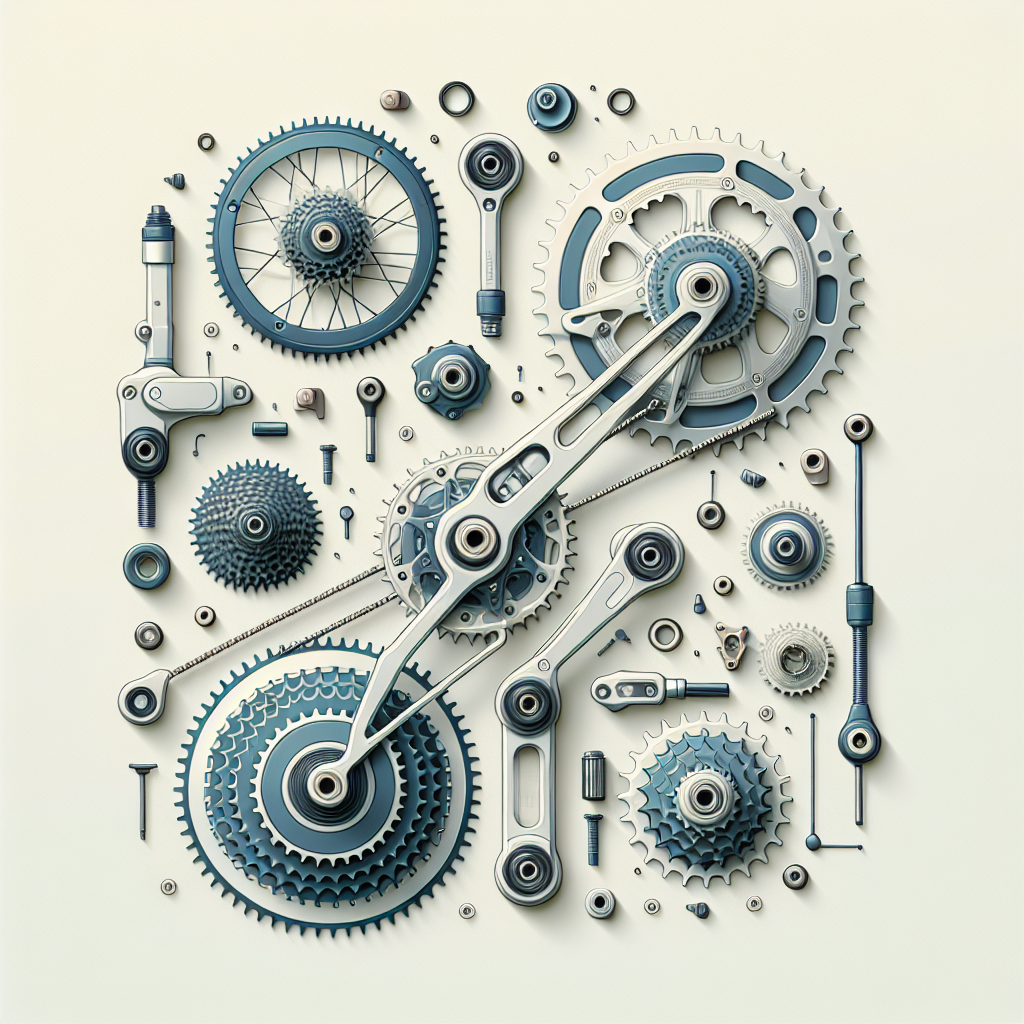
Understanding the intricacies of bike gears can significantly enhance your cycling experience, whether you’re a casual rider or a competitive cyclist. This article delves into the essential components of bike gears, including shifters, derailleurs, and gear ratios, to provide a comprehensive understanding of how they work together to optimize your ride.
Shifters: The Control Center of Your Bike’s Gears
Shifters are the primary interface between the rider and the bike’s gearing system. They allow you to change gears, adapting to different terrains and riding conditions. There are several types of shifters, each with its own unique mechanism and advantages.
Types of Shifters
- Trigger Shifters: Commonly found on mountain bikes, trigger shifters use a lever system to shift gears. One lever shifts up, while the other shifts down, providing precise control over gear changes.
- Grip Shifters: Often seen on hybrid and commuter bikes, grip shifters are integrated into the handlebar grips. Riders twist the grip to change gears, offering a more intuitive and seamless shifting experience.
- Bar-End Shifters: Popular among touring cyclists, bar-end shifters are mounted at the ends of the handlebars. They provide reliable and straightforward gear changes, especially useful for long-distance rides.
- Integrated Shifters: Found on road bikes, integrated shifters combine brake levers and gear shifters into a single unit. This design allows for quick and efficient gear changes without removing your hands from the handlebars.
How Shifters Work
Shifters operate by pulling or releasing a cable connected to the derailleurs. When you activate the shifter, it adjusts the tension on the cable, causing the derailleur to move the chain onto a different gear. The precision and responsiveness of shifters are crucial for smooth and efficient gear changes, especially in challenging riding conditions.
Derailleurs: The Mechanism Behind Gear Changes
Derailleurs are the components responsible for moving the chain between gears. There are two main types of derailleurs: front and rear. Each plays a vital role in the overall functioning of the bike’s gearing system.
Front Derailleur
The front derailleur guides the chain between the chainrings on the crankset. It consists of a cage that moves laterally to shift the chain from one chainring to another. Proper adjustment of the front derailleur is essential to prevent chain rub and ensure smooth shifting.
Rear Derailleur
The rear derailleur manages the chain’s movement across the cassette, which is a cluster of gears located on the rear wheel. It consists of a spring-loaded arm that moves the chain from one cog to another. The rear derailleur also maintains chain tension, preventing it from sagging or skipping gears.
Adjusting Derailleurs
Properly adjusted derailleurs are crucial for optimal performance. Misaligned derailleurs can cause poor shifting, chain drops, and excessive wear on the drivetrain. Regular maintenance, including cleaning and lubrication, can help keep derailleurs functioning smoothly. Additionally, fine-tuning the limit screws and cable tension ensures precise and reliable gear changes.
Gear Ratios: Balancing Speed and Effort
Gear ratios determine the relationship between the number of teeth on the chainrings and the cogs. Understanding gear ratios is essential for selecting the right gear for different riding conditions, balancing speed and effort.
Calculating Gear Ratios
To calculate a gear ratio, divide the number of teeth on the chainring by the number of teeth on the cog. For example, if your chainring has 50 teeth and your cog has 25 teeth, the gear ratio is 2:1. This means that for every pedal revolution, the rear wheel rotates twice.
Choosing the Right Gear
Different gear ratios are suited for various terrains and riding styles. Lower gear ratios (e.g., 1:1) provide more torque, making it easier to climb hills but resulting in slower speeds. Higher gear ratios (e.g., 4:1) offer less torque but allow for faster speeds on flat terrain. Understanding how to select the appropriate gear ratio can enhance your efficiency and comfort while riding.
Gear Combinations
Modern bikes come with a wide range of gear combinations, allowing riders to fine-tune their gearing for specific needs. For example, a bike with a triple chainring and a 10-speed cassette offers 30 possible gear combinations. However, not all combinations are practical or efficient. Cross-chaining, where the chain is at an extreme angle, should be avoided as it can cause excessive wear and poor shifting performance.
Conclusion
Understanding bike gears, including shifters, derailleurs, and gear ratios, is essential for optimizing your cycling experience. By mastering these components, you can improve your efficiency, tackle various terrains, and enjoy a smoother, more enjoyable ride. Regular maintenance and proper adjustment of your bike’s gearing system will ensure reliable performance and longevity, allowing you to focus on the joy of cycling.

